With world-class surfing & diving, a large number of cultural & historical sights, rugged coastlines & sandy beaches Bali has something to offer for everyone. This article encompasses all mentioned above
Bali general info & Bali/Indonesia history
Bali is one of the 27 provinces of the Republic of Indonesia. The population is currently around four million, and the island is divided into eight regencies, plus the municipality of Denpasar (with Denpasar being Bali´s largest and capital city). The province includes the island of Bali and a few smaller islands, such as Nusa Penida, Nusa Lembongan and Nusa Ceningan.
History
The history of Bali started in the Paleolithic Age and is characterized by migrations of people and cultures from other parts of Asia.
At the end of the last Ice Age, rising sea levels formed the string of islands that nowadays is known as Indonesia and divided the islands of Java and Bali which were connected.
We were told that the first European settlement was Dutch.
Indonesia was declared independent in 1945 shortly after the end of WWII, after having been ruled by Dutch for three and a half centuries and occupied by Japanese from 1942 till 1945
Ubud
Our first stop in Bali was Ubud which is a town in the centre of Bali – most accommodation offer or can organize a transport for you from the airport which is very handy especially if you happen to arrive around 11pm and you have booked a sunrise hike for the next day.
The reason why we decided to visit Ubud is because we were interested in getting to know Balinese culture and in seeing the natural landscapes such as rice terraces besides the gorgeous beaches Bali is famous for. We booked a lovely bamboo lodge accommodation overlooking the rice terraces and close to a river – Bali has many of these kind of accommodations and I do suggest staying at least once in one of these.
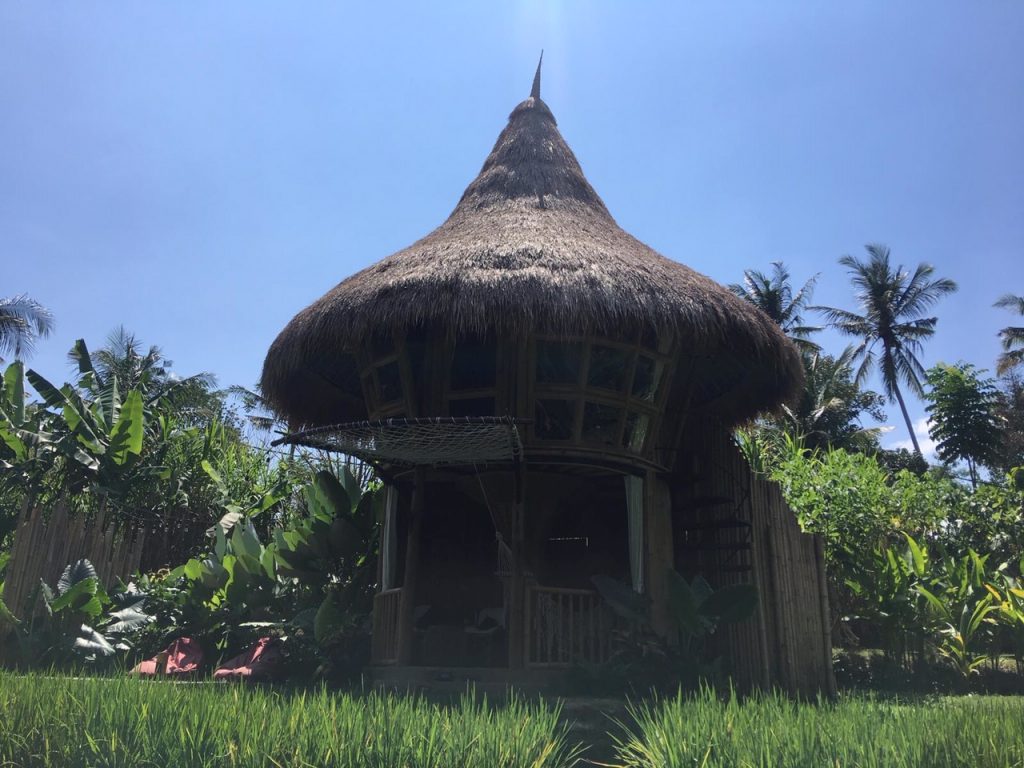
Mt Batur Hike, Hot Spring & Luwak coffee plantation
The first sight we decided to visit was the sunrise at Mt Batur. The hike is not hard and takes around 2hours. Please be aware that on the top it´s cold and that even though you will find people hiring blankets you should still bring some warm cloth with you.


 Before getting back to Ubud most of the tour guides do add two stops – one at the Batur Natural Hot Spring which is a perfect way to relax after the hike. A part from that the hot spring is located in a gorgeous area right adjacent to Lake Batur and offers gorgeous views of Mt Batur itself.
Before getting back to Ubud most of the tour guides do add two stops – one at the Batur Natural Hot Spring which is a perfect way to relax after the hike. A part from that the hot spring is located in a gorgeous area right adjacent to Lake Batur and offers gorgeous views of Mt Batur itself.
The other one was a Luwak Coffee plantation where besides having a look at some coffee plants and the roasting procedure you will be able to try many different kind of coffees, teas and chocolate.


Please be aware that if you want to try the worlds famous Luwak coffee you need to pay extra for it. Now we personally did not like the Luwak coffee – said that this is just our personal opinion/taste therefore I do suggest trying it.
The name Luwak comes from little mammals called luwak that eat the beans. Before being expelled the beans undergo chemical treatment and fermentations. Once the beans are collected they get cleaned, roasted and ground like any other coffee.
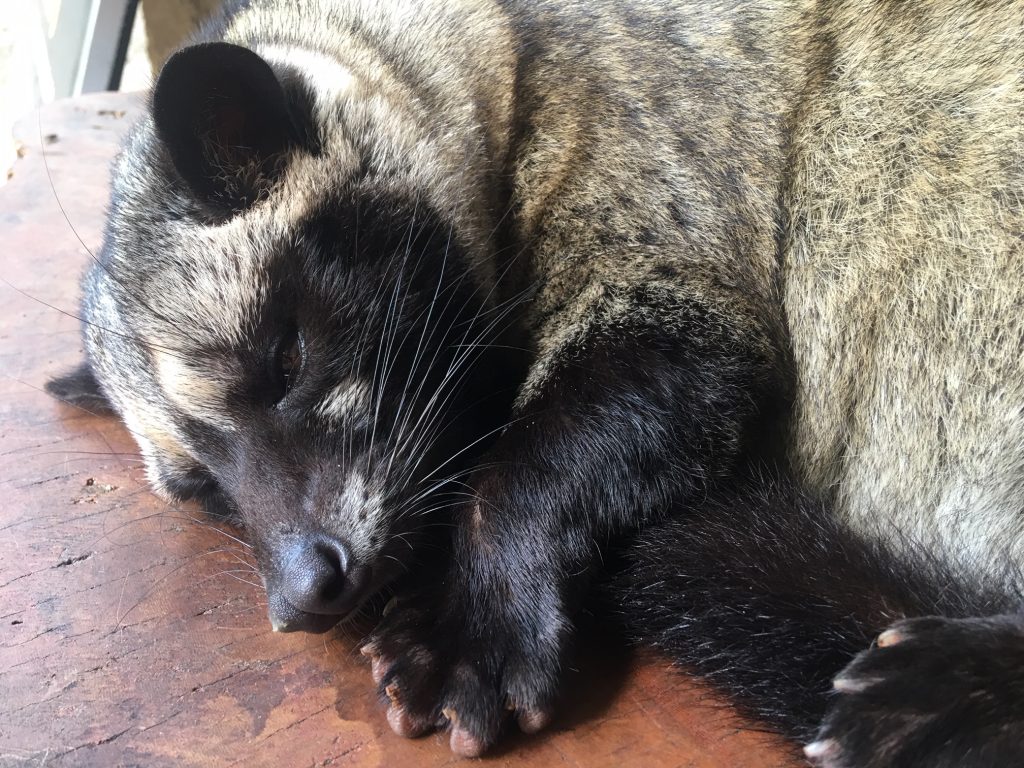 Monkey Forest
Monkey Forest
In the afternoon we decided to visit the Monkey Forest (12.5 hectares of forest and 186 species of different trees), which mission is conserving the area based on the concept of the Hinduism philosophy called “Tri (three) Hita (happiness) Karana (cause)” which means three ways to reach spiritual and physical wellbeing. This doctrine is based on how people should mantain a harmonous relationship to other humans, to the environment and with The Supreme God. We were told that 1059 monkeys live here and that they are divided in 7 separate groups. You will find monkeys all over the place – please do not feed them and do not try to pet them (don´t forget that they are wild animals). In the Monkey Forest you can also see 3 temples: Pura Dalem or temple to worship Lord Shiva, The Holy Water Temple to worship Goddess Gangga, and the Cremation Temple to worship Brahma Prajapati
Some facts about monkeys that I have read while walking around the Monkey Forest
- Adult females can weigh up to 5.7 kg. Males up to 8 kg. Maximum recorded is 11 kg.
- Usually only one infant is born (weighs around 0.05 – 0. 1 kg at birth), females are pregnant for nearly 6 months. Infants stay with their mother until they are about 10 months old. They receive breast milk for the first 6 months but also learn to eat other foods. The mother teaches them everything about survival in the forest.
- Adults spend most of the time on their own.
- Females can start having babies at the age of 3 – 5.
- Around the age of 3-5 years male start to get a beard and a moustache. Cheek pads and throat pouches may not appear until the age of 4-5 years or may not grow at all.
Handara Gate
The day after we started with the Handara Gate (Candi Bentar in Balinese) – a famous photo spot of the area. This structure is perfectly split in two creating a passage in the center for people to walk through. It is actually the entrance of a golf resort and is surrounded by lush green mountains and rainforest. Please be aware that you will have to pay to be allowed to take a picture and be also aware that being a very famous spot it is crowded. If you do not want to get stuck in a long queue you are better off arriving early.
The Wanagiri Hills
The Wanagiri Hills and Swings are other famous photo spots. They are famous for their lookouts consisting of different platforms with different attractions such as human-sized bird’s nest, swings and the bow of a boat which all face directly Lake Buyan and Lake Tamblingan surrounded by forests. Please be aware that there are many different places with obviously many different attractions and different prices along the Wanagiri Hills.
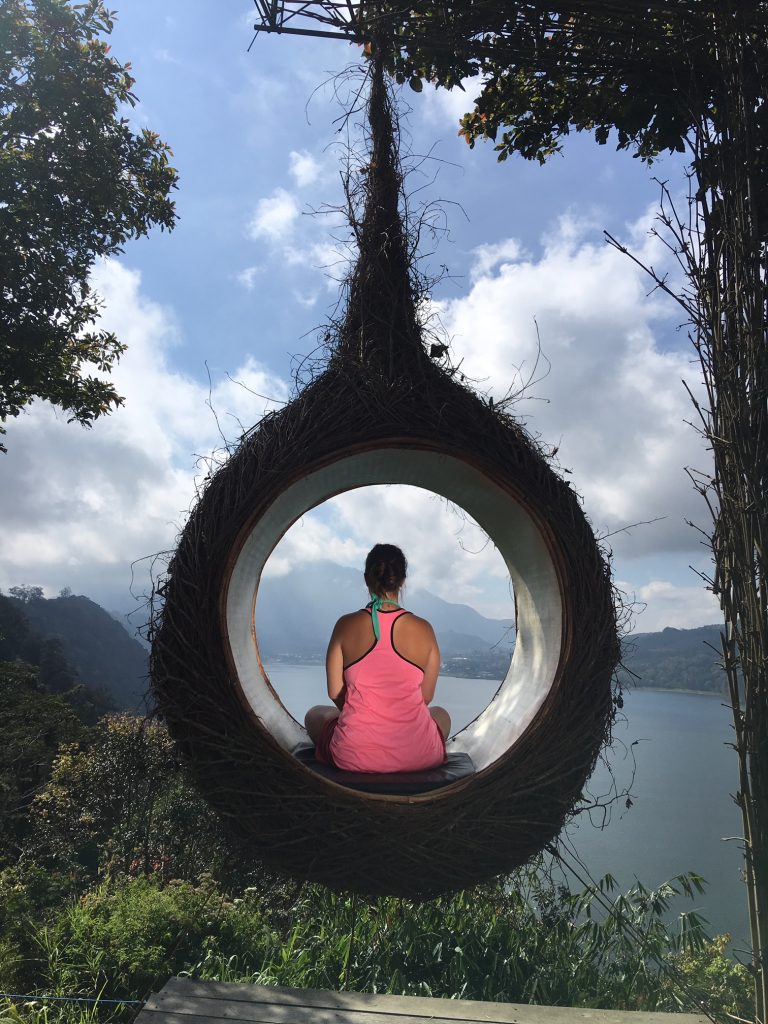
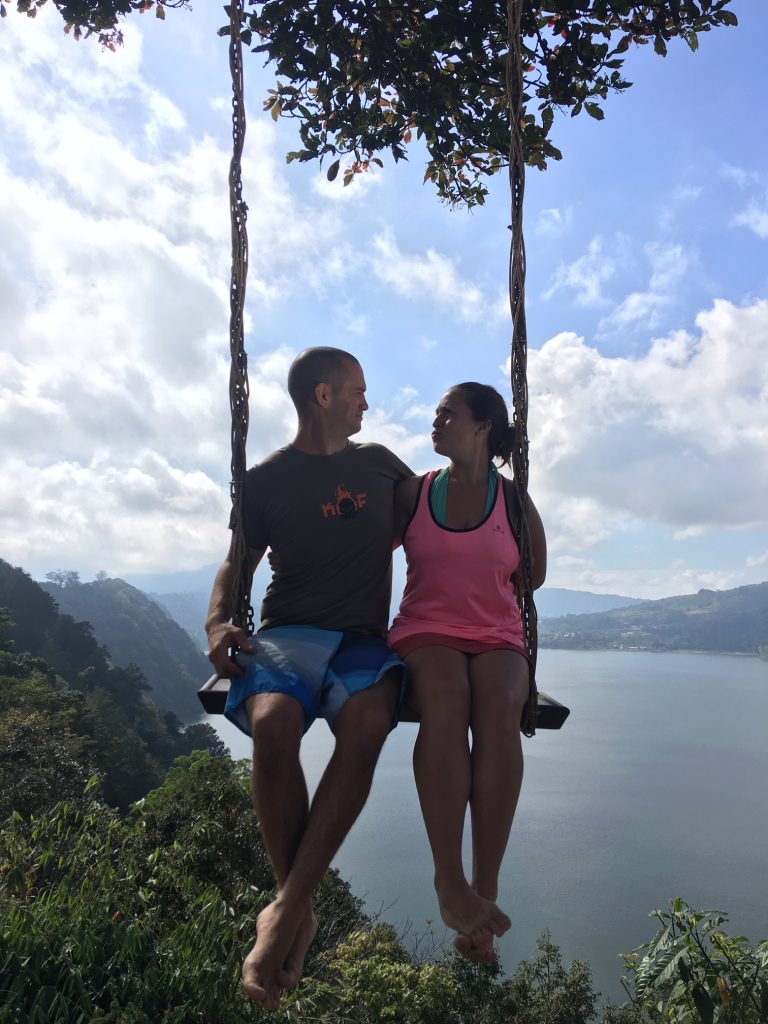
Pura Ulun Danu Bratan
Our next stop was Pura ulun danu bratan (one of the nine directional temples – you will find the explanation as you will get to the Gate of Heaven part) also known as the Lake Temple. It was shifted and rebuilt a few time due to several eruptions of Mt Batur. It dates back to 1633 and is built on a vulcan lake with the water of the lake declared as holy. It is dedicated to Dewi Batari Ulun Danu – the goddess of lakes and rivers. It is recognize as UNESCO World Cultural Heritage being one of the main structure in the irrigation systems that draws the water from Lake Batur into Subak. The temple complex consists of different buildings – my favourite one and probably the most famous one is the pelinggih meru. The architecture of the roof of this temple is quite unique. The complex features also statues of dragons which are said to protect the temple. In the complex you will find a huge wall representing the Danu Beratan history.
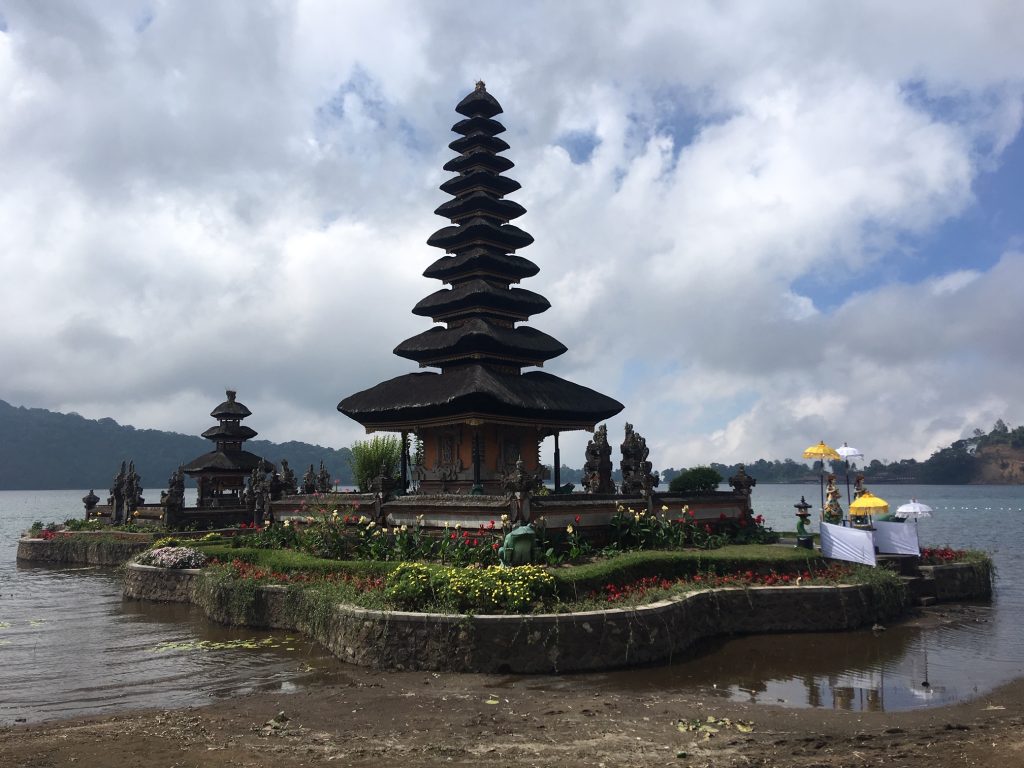
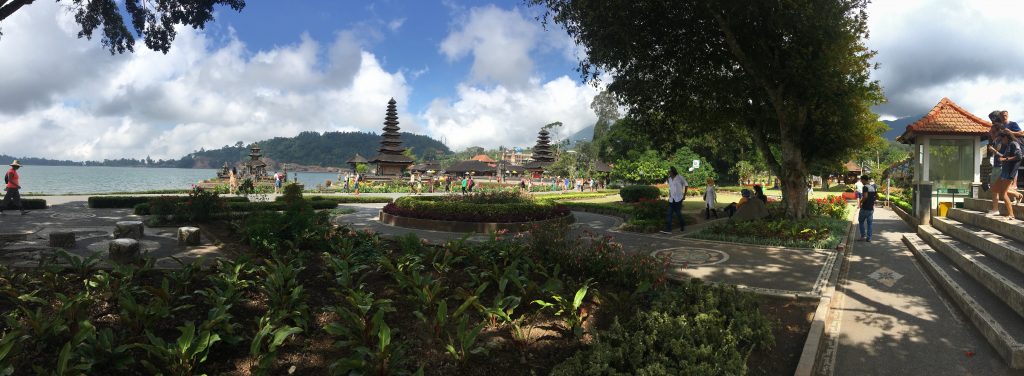
The jungle swing
The jungle swing was a terrific experience – first I have to admit that I was scared considering the height of the swing but swinging over the forest and rice terraces was simply amazing. I had my eyes shut for the first part of the swing but when I finally managed to open them (and stopped screaming) I was overwhelmed by the beautiful view. In my opinion a must do.
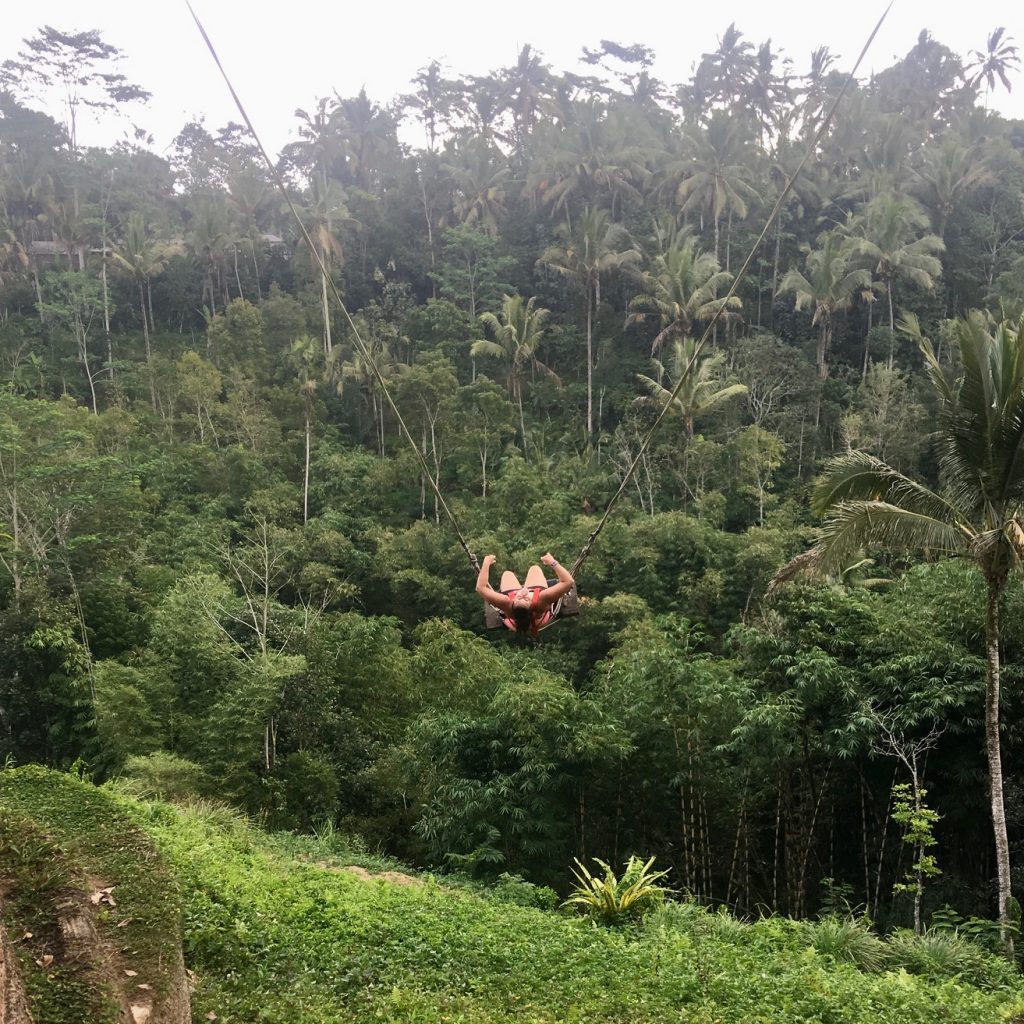
The Kantolampo waterfall
The Kantolampo waterfall was our last stop of the day. This beautiful waterfall also called Air Terjun Kanto Lampo can be reached after a 15minutes walk. It consists of different black rock formations on which the water falls creating many different cascades. Please be aware that there is an entry fee to pay to get to the waterfall – should be 15,000 IDR but please check because the price could have changed. Please be carefull because the rocks can get very slippery.

The Tirta Empul
On our last day in Ubud we booked a guide for the day who at the end of the day would have dropped us off at our next destination. Please be aware that this option comes very handy if you do not have a lot of time – if you do you are better off hiring a motobike which allows you to do the same but it would definitely be cheaper. We started the day at the Tirta Empul (“holy water spring”) famous for being the temple in which you can perform the sacred washing ritual to purify yourself. This area is called “The Jaba Tengah” which contains two purification pools with 30 water spouts containing water which locals believe having magical powers.
We were told that it was founded in 926 A.D. and that it is dedicated to Vishnu – the Hindu god of water. We visited the temple early in the morning therefore there were just a couple of people. We were cold and therefore decided not to get in the water – if you wish to get purified you need to dip your heads below the water spouts and you have to do it with all 30 water spouts starting from the first one on the left.
The presidential palace is overlooking the temple complex. It was built in 1954 for the first president of Indonesia (Soekarno) .
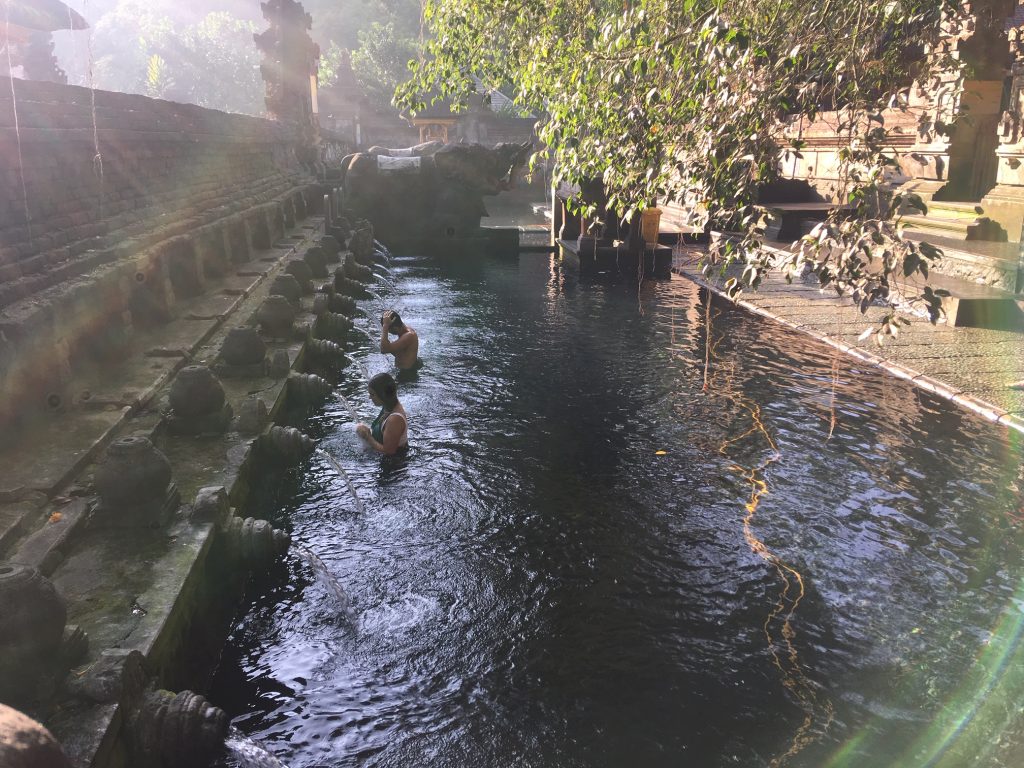
Tukad Cepung Waterfall
Tukad Cepung Waterfall is famous for magical illumination created by rays streaming into the cave. Please be aware that once you get down the stairs you will need to turn left to get to the Tukad Cepung Waterfall but that if you turn right you will be reaching smaller waterfalls – we were lucky enough to see a rainbow there. If you are not in a hurry I do suggest you give it a go – it takes just a couple of minutes.
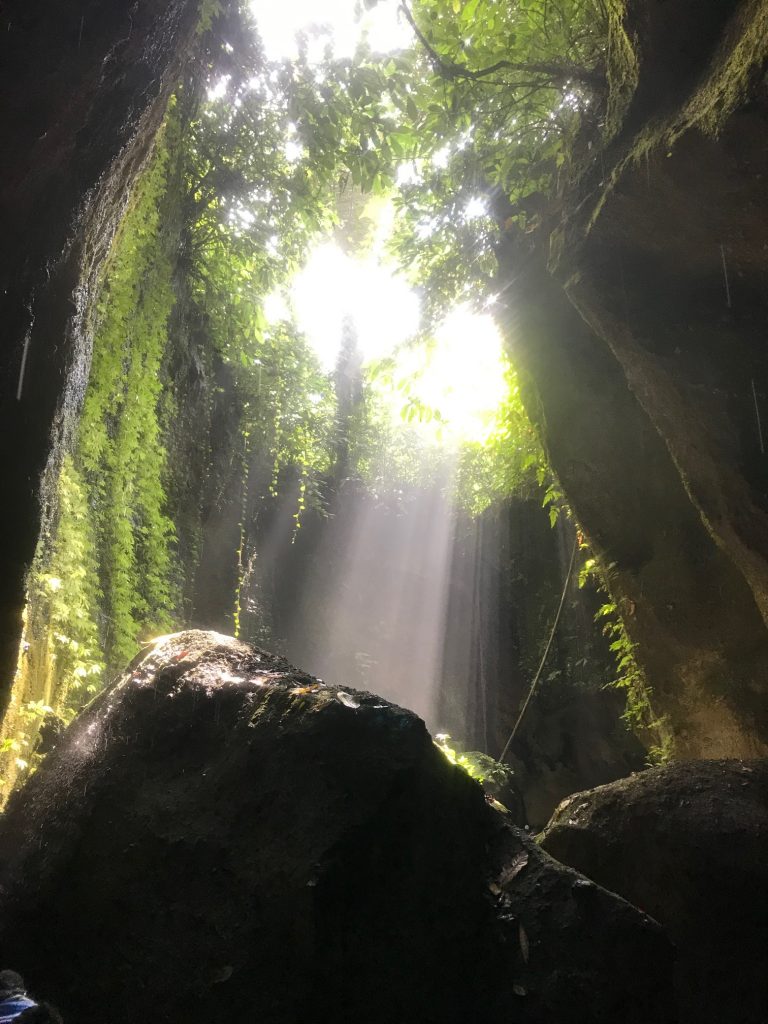
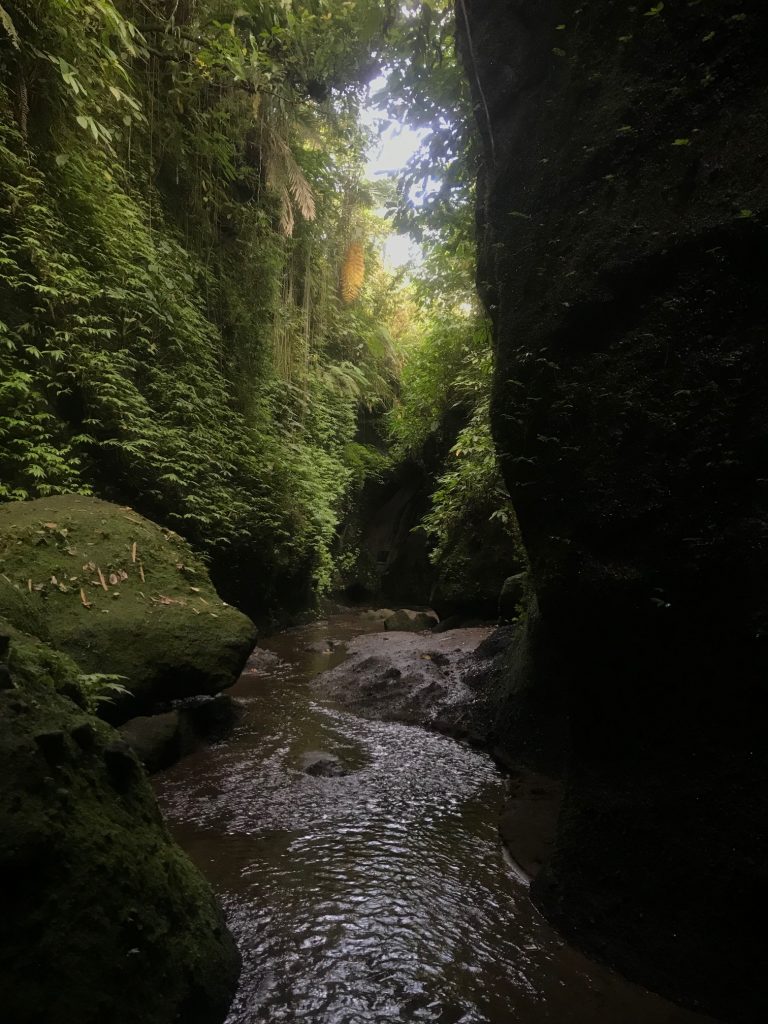
Tukad Melangit
Tukad melangit was the third stop of the day and it consists of a platform overlooking tropical jungle famous for being a selfie spot. By the time we arrived at The gate of heaven there were loads of people waiting in the queue to get their photos. Being probably the most famous spot in the area you should be prepared to wait for hours. We did not really want to spend 2 hours in line just for a picture therefore we waited for the changing of the person and we took a foto of the Gate of heaven with no one in front of it.
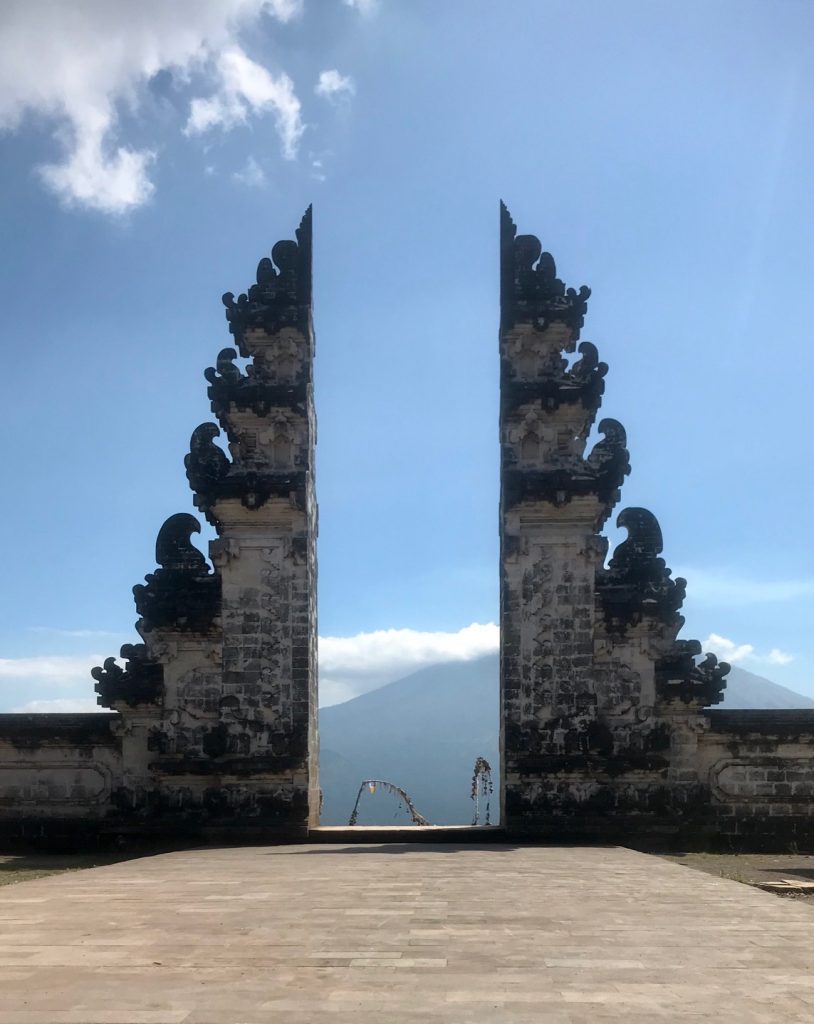
The Gate of Heaven is one of the nine directional temples – locally known as “kahyanganjagat”. These temples are the main temples of Bali and said to protect Bali – their locations are considered to attract good luck. We have visited 3 of them – these are the other 6: Batukaru Temple, Besakih Temple, Goa Lawah Temple, Masceti Temple, PasarAgung Temple and Ulun Danu Batur Temple
Tirta Gangga
Tirta gangga (Blessed Water of the Ganges) was our last stop and it is a former royal palace. It is a gorgeous place full of beautiful flowers, maze of pools and fountains. It is famous for the steps made by stone which form a trail in the Mahabharata Pond.
Padangbai
Diving @ Padanbai
After Ubud we stopped for one night in Padangbai which we personally did not like that much. We had booked a dive which was simply fantastic and the only reason why the stopover in Padangbai was worth it. The guide was very calm and even though I panicked for the first 5minutes he was able to calm me down and we did two gorgeous dives. He made me swim and go in the directions I wanted to and made me stop wherever I wanted to have a look at the fabulous marine wildlife of the area. He was the one who spotted the two turtles we have seen. A part from the turtles we saw a lot of other marine life. Below some videos
The Blue Lagoon Beach & Bias Tugel Beach
In the afternoon we went to the Blue Lagoon Beach famous for snorkeling. Beside that there is Bias Tugel Beach which is another famous beach of the area. We did not manage to get there but I heard that it is worth it. I was told that many accommodation do have a shuttle bus which brings you close. From the drop point you will need to walk 10minutes till you get to the entrance and then you have another 10-15minutes going down some stairs till you reach the beach.
South Bali
Jimbaram Beach & seafood sunset dinner
We decided to spent the last days in the South of Bali. Once arrived we decided to rent a motorbike to get to Jimbaram Beach famous for seafood sunset dinner with tables illuminated by candles set right on the beach. There are many different restaurants on the beach – they all serve seafood, marinated and spiced according to the island’s culinary traditions, and grilled over burning coconut husks. Please bring a jumper along because it can get chilly.
Driving a motorbike in Bali
Renting a motorbike in Bali is something everyone should try at least once but PLEASE BE CAREFUL. First of all please be aware that you need an international driving licence. Please be aware that traffic in Bali is chaotic – therefore my suggestion is driving slowly. Streets are full of motorbikes and cars therefore please be prepared and if you do not feel comfy in driving in traffic just leave it. Streets are also loaded with small stones, loose chippings sand and if it rains it creates a surface where your tire can loose grip easily. When you rent a motorbike you should check were the horn is – it will come really handy. One of the best things of renting a motorbike are experiencing local gas stations which are completely different from the once we are used to. In fact gas in Bali is sold by small stands with wooden shelves full of glass bottles with gasoline. Last but not least (even though I reckon that this should be something implied) wear a helmet!
Tanah Lot
We spent one day visiting Tanah Lot and some beaches around the area. Tanah Lot complex is a gorgeous place located in the Beraban Village- obviously the main attraction is the Tanah ( earth) Lot (sea) Temple built to worship Bhatara Segara – the sea God but I do assure you that there are other interesting things to see.
First of all after the entrance gate there is a short walk where you will walking past a market where you can find Balinese gifts (if this is your last stop and you are still missing some presents you might find something here – please be aware that I do not know if the prices are higher than in other places but as you probably are aware you can bargain everywhere) till you reach the Tanah Lot temple.
Once entered you will find on your left-hand side the Tanah Lot temple and a terrace from which you can admire this place. Sunset here are said to be very beautiful. If you then start walking on the right-hand side you will find the Enjung Galuh Temple built for “Dewi Sri” – the Goddess of prosperity, Jro Kandang Temple built for the Beraban village in order to get their animal and plants recover from diseases, the Batu Bolong temple where the God of Holiness is worship (which consists of one rock that comes out from the sea) & the Batu Mejan Temple (which is a place where you get holy water for Hindus ceremonials).
Let´s get back to the Tanah Lot temple which is built on a small island. The story of this temple can be dated back to the 15th century when a holy priest called Dang Hyang Dwi Jendra came to Bali and was given by the king the opportunity to teach Hinduism on the island. Following a holy ray coming from south east he found the holy spring in the Beraban area. Nearby he found a rock (Gili – rock Beo – bird) for meditation.
The legend says that to protect himself and the locals from the head of the village Bandesa Beraban Sakti he moved the rock where its now and built the Tanah Lot temple. To protect the temple, with his mighty power, he created a poisonous snake from his sash (which is believed to be living at the base of the island) in order to protect it from evil intruders. After seing his powers the head of the village became his follower too and he was given a keris (a traditional assymetric dagger used as a weapon or a spiritual object that is said to have a mystical power) by the holy priest.
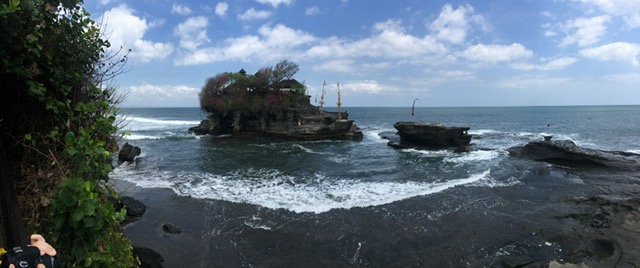
Labuan Sait beach
Labuan Sait beach is were we went for a swim and to relax before heading to the Uluwatu temple for the sunset and the Kecak & Fire dance. To reach the beach you will walk through natural rock “tunnels” – here you will find a lot of monkeys and some locals selling food, drinks and souvenirs. You will also find some beach umbrealls – please be aware that they are not for free.
The Uluwatu Temple
The Uluwatu temple located on top of a steep cliff approximately 70 metres above sea level is very gorgeous and we liked it what we did not like at all was the Kecak & Fire dance. Saying that I am not suggesting you shouldn´t go because I do always think that it is important to get to know the culture of the countries you are visiting and even because this is simply my personal opinion and not an “univerdsal truth”.
The Uluwatu Temple ( ulu = “land’s end” and watu = “rock” – Pura Luhur (something of divine origin) Uluwatu )) was built in black coral rock and is one of the nine directional temples. To be honest with you I have not really understood who built the temple. We were told that there are different beliefs – some believe that it was built by Mpu Kunturan, a Majapahit monk during the reign of the king Sri Haji Marakata – others believe that it was built by Dang Hyang Nirartha. One thing is certain – it was built to worship God Shiva.
Nusa Penida
The East Coast of Nusa Penida was how we spent our last day on Bali. There are many different ferries at many different hours that will get you to Nusa Penida departin from Sanur, Kusamba and Padang Bai.
Snorkeling with Mantas
I have to admit that this was one of our highlights – we had booked a snorkeling with manta tour and it was simply incredible. The Mantas were swimming very close to us and kept on coming back allowing us to have a really good look at them. Unfortunately we could´t dive on Nusa Penida because all Dive centers I got in contact with told me that we both needed to be certified. This is something we will definitely do if we might get back to Bali. Below you will find a video:
Atuh Beach & Diamond Beach
We then visited Atuh Beach which is close to Diamond Beach. We obviously hade some gorgeous views of Diamond Beach but the time was running very fast that we did not have enough time to get down on the beach. Atuh Beach is much closer and quicker to reach. There is a staircase to get down to Diamond Beach – we were told from our guide that it would take longer to get there. This area is also famous for the Tree area (Rumah Pohon) which is really close by but as said before we did not have enough time to get to see it.
I have to admit that I was sad not having at least another day to spend on Nusa Penida. So please allow you at least two days on this island – this will give you enough time to visit the sights mentioned above and also the chance to visit the West Side of Nusa Penida which I heard is gorgeous as well.

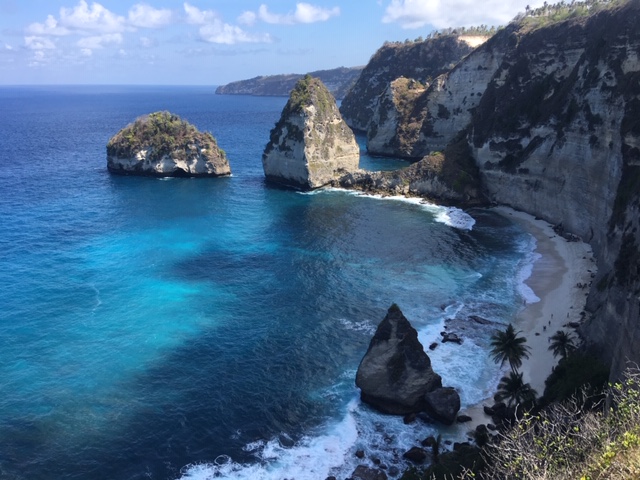
Uluwatu Single Fin
We spent our last evening at Uluwatu single Fin which is set on a cliff overlooking what we were told is Uluwatu surf break discovered back in the 70´s. The place itself is very lovely and the burgers we had were really delicious. We discovered that there was a surf competition going on called “Single Fin Classic” and so we decided we would be back the morning after before leaving Bali. It was my first time watching a surf competition and I really enjoyed it.
General dressing code
I haven´t been talking about the dressing codes while entering the temples. Please be aware that you will always need a sarong, scarf or sash tied around the waist. Most temples do give it to you for free – in some you will have to pay for it therefore if you have a long scarf you might as well bring it along.
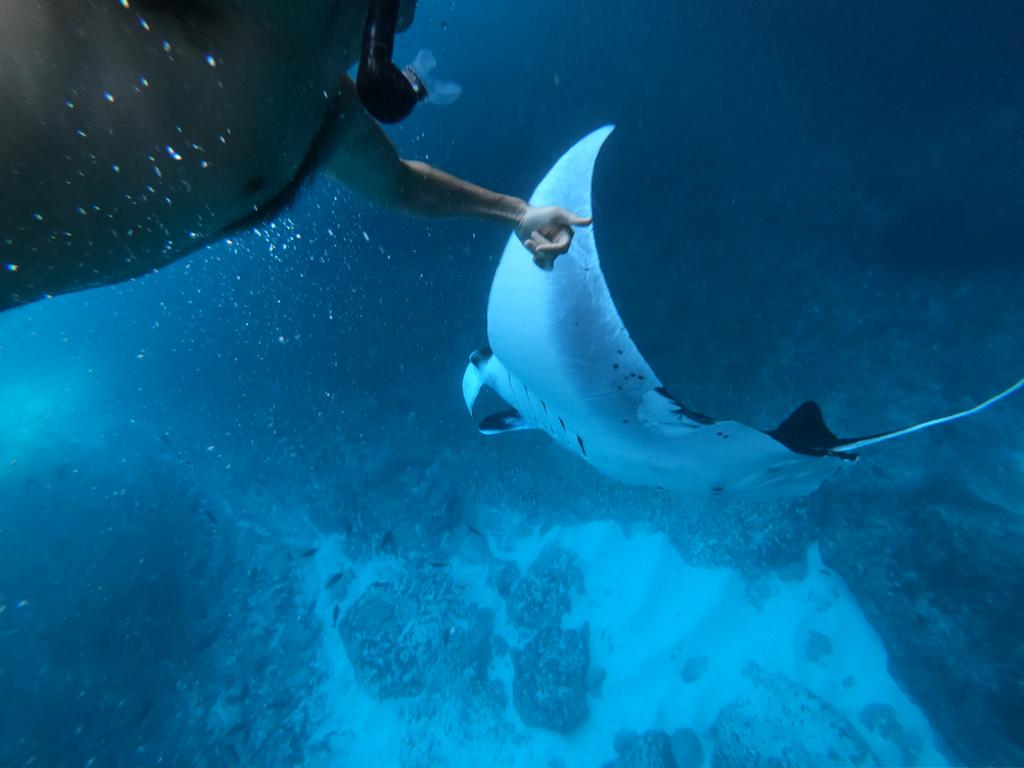
Leave a reply